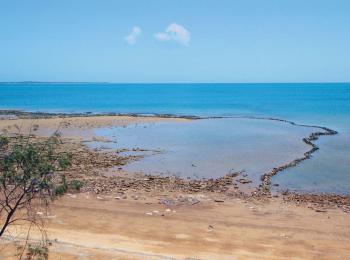
This study of rock-wall fish traps forms a crucial part of a larger research endeavour that seeks to understand the pre-history and cultural change of the Aboriginal people of the Wellesley Islands and adjacent mainland in the Southern Gulf of Carpentaria. These traps were created by building rock walls in strategic points of the inter-tidal zone; and fish, turtle, dugong or shellfish were then caught by the action of the tide. Methodological concerns about how to identify these traps accurately aside, the counting process that has been conducted in the study area already suggests that it supports the largest number of fish-trap complexes in Aboriginal Australia. The methodological issues that must be resolved by the researchers involve how to identify individual fish traps using the available data, how such decisions might influence how the density of fish-traps is measured with regards to making inter-island and inter-group comparisons. Also strategies for establishing their age and when they were used must be evolved.
Few places in Australia have had such a significant input into considerations of Aboriginal offshore island colonization than the Wellesley Islands. However, the archaeological substantiation for this influence is minimal. This fish trap study will help provide some of that vital material.